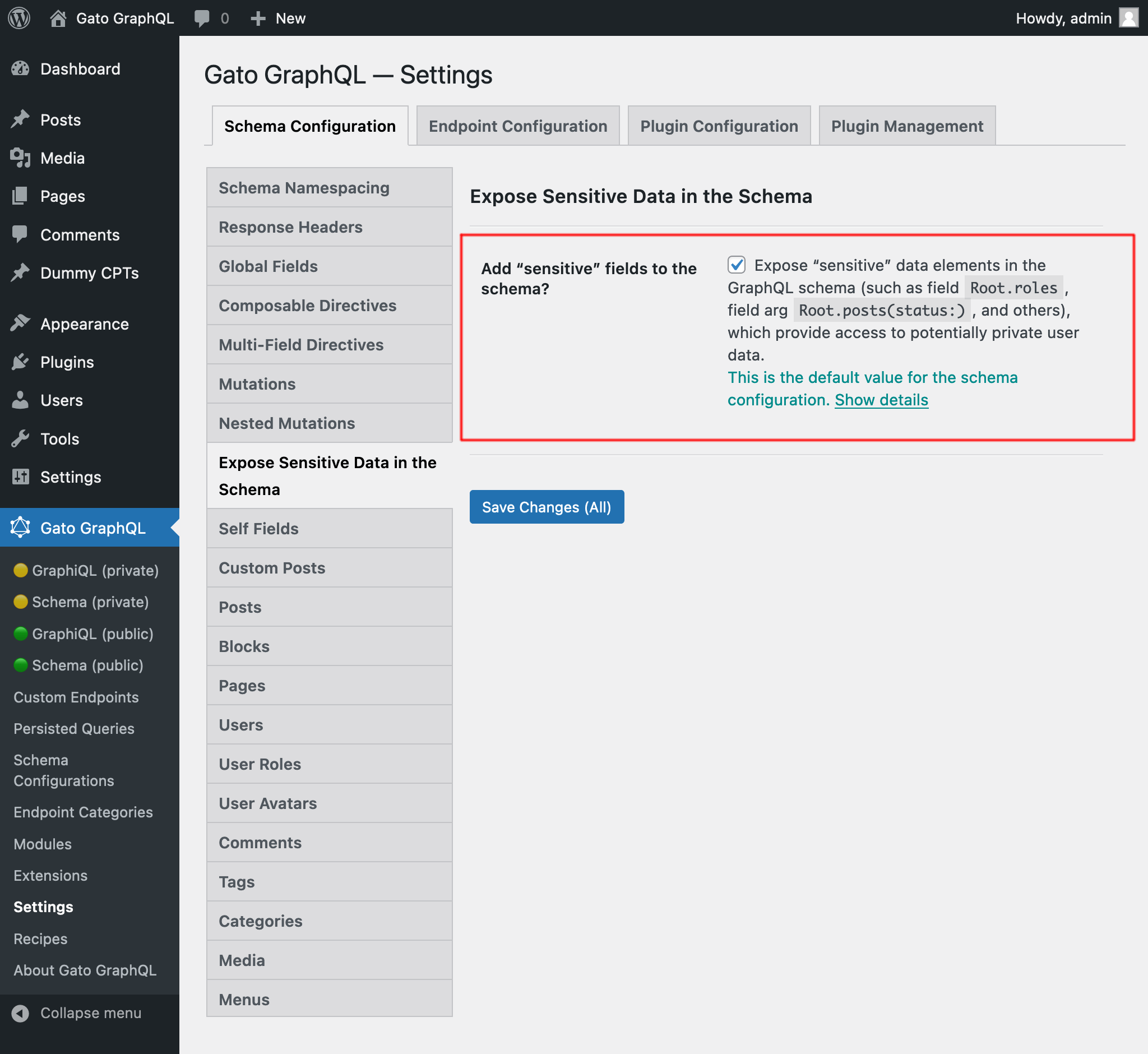Querying “sensitive” data fields
The GraphQL schema must strike a balance between public and private fields, as to avoid exposing private information in a public API.
By default, all fields in the GraphQL schema can only access public data. For instance, posts can only retrieve posts with status "publish".
In addition, we can add “sensitive” data fields and input fields to the schema, expected to be used by the admin only, enabled for a specific custom endpoint or persisted query, which can also fetch private data.
For instance, field argument posts(filter:) will contain an additional input field status, which allows us to retrieve non-published posts (eg: posts with status "pending", "draft" or "trash") for any user. Likewise, the schema will expose field Post.status, to visualize this piece of data.
List of “sensitive” data elements
The elements below (among others) are, by default, treated as private data:
User:
emailrolescapabilities
Custom Posts:
statuswpAdminEditURLhasPasswordpasswordrawContentrawTitlerawExcerpt
Comments:
statusrawContent
Custom Post Mutations:
authorByinput
Menu Items:
rawTitle
Overriding the default configuration
The elements listed above can be made public.
In the Settings page, in the corresponding tab for each, there is a checkbox to configure if to treat them as “sensitive” or “normal”:

Inspecting the “sensitive” data elements via schema introspection
The isSensitiveDataElement property is added to field extensions when doing schema introspection. To find out which are the “sensitive” data elements from the schema, execute this query:
query ViewSensitiveDataElements {
__schema {
types {
name
fields {
name
extensions {
isSensitiveDataElement
}
args {
name
extensions {
isSensitiveDataElement
}
}
}
inputFields {
name
extensions {
isSensitiveDataElement
}
}
enumValues {
name
extensions {
isSensitiveDataElement
}
}
}
}
}And then search for entries with "isSensitiveDataElement": true in the results.
Adding “sensitive” data elements to the endpoints
Adding “sensitive” data elements to the schema can be configured as follows, in order of priority:
✅ Specific mode for the custom endpoint or persisted query, defined in the schema configuration

✅ Default mode, defined in the Settings
If the schema configuration has value "Default", it will use the mode defined in the Settings:

When to use
Use whenever exposing private information is allowed, such as when building a static website, fetching data from a local WordPress instance (i.e. not a public API).
